Posted by Elena del Valle on March 30, 2016
By Jay Gronlund
President, The Pathfinder Group
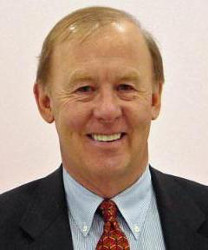
Jay Gronlund, president, The Pathfinder Group
Photo: Jay Gronlund
Before the internet, marketers had a relatively free reign for making questionable competitive claims, creating a brand image of superiority and hence demanding a premium price. But the internet has changed the ground rules. Instant access to endless information and objective feedback from friends has enabled consumers to seek and find the truth behind such promises. This has also led to an atmosphere of extensive mistrust of companies, CEO’s and even many established brands, especially among Hispanic Millennials. Today consumers want authenticity.
We are living in an age of growing skepticism and ebbing loyalty for many established brands. A recent poll by Havas, a reputable marketing agency, showed that consumers in America trust only about one fifth of all brands (least trusted – snacks and household gadgets). A report from the research firm, Mintel, indicated that about half of American shoppers trust smaller companies to do the right thing, compared to only 36% for large ones. The impact of these changing attitudes is already being felt by major brands. Catalina, a big marketing consulting firm, reported that 90 of the top 100 consumer packaged goods brands lost market share in the first half of 2015.
Click to read the entire Why Band Authenticity Is Most Important for Hispanic Millennials
Posted by Elena del Valle on March 18, 2016
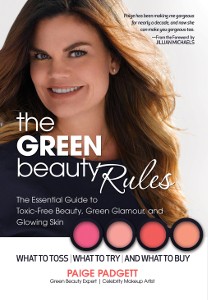
The Green Beauty Rules
Photos: cover by Don Flood and author photo by Michele LoBosco
Do you worry about artificial ingredients in your cosmetics and personal products but are reluctant to stop wearing makeup? After attending a presentation by Ken Cook, founder, Environmental Working Group, Paige Padgett, a makeup artist, had concerns about the ingredients in the products she used so she began to explore toxic-free alternatives.
When asked by email how she defines the term she said, “That is difficult as it’s different for everyone. For me it’s about being sustainable. Organic and natural are ideal but sustainable takes it a bit further. Ingredients should be sustainable which includes being non-toxic.”
From concept to publication she dedicated two years to The Green Beauty Rules: The Essential Guide to Toxic-Free Beauty, Green Glamour and Glowing Skin (HCI Books, $21.95), a 256-page softcover book peppered with full color photos published in 2015. In it, her first book, she promises a step-by-step guide and a sample clean beauty routine of approximately 200 chemically-safe beauty products, ranking 3 or lower on the Environmental Working Group’s Skin Deep Cosmetic Database. Green beauty, she explains in her book, doesn’t mean organic, all natural or completely chemical free; and minerals, for example, can’t be certified organic so mineral-based products aren’t organic. The main reason she wrote the book was because there were no books on that subject for women who use makeup and want to use green cosmetics, she explained by email.

Paige Padgett, author, The Green Beauty Rules
“There are a few on the market that are fun but none from a makeup artists perspective that talks about chemicals and give a step by step guide to green your routine and beauty tutorials,” she said. When asked how she became an expert she said she never she studied chemistry but, “Rather I am one of the few professional pioneers in the industry. However, I have attended several dozen conferences, seminars, workshops, talks events on the subject over the years as well as chemistry courses interviewing prominent people in the industry and writing for magazines on the subject.”
According to her bio, Padgett, the founder of PaigePadgett.com, was one of the first makeup artists to create a completely green makeup line. The biggest challenge she encountered in the book project was the time and cost of photography. The biggest surprise? “That when you write a book you are not finished. You have to market the book forever,” she said.
She believes in green beauty that is chemically safe, cruelty free and eco-friendly. That means avoiding petrochemicals and nanoparticles, she says. In the book she explains that they have been linked to allergies, skin irritation, cancer, serious health issues, neuro and respiratory damage, birth defect, and disruption of the endocrine system. In a chapter titled The Nasties she lists examples of those products and why readers should not use them. The chapter includes a list of 20 of the most common harmful chemicals often present in beauty products. For example, she says parabens are hormone disruptors found in 99 percent of cosmetics.
In the book, she provides suggestions for shopping venues, vegan and gluten-free brands, and products under $15. She also shares information on nail care, hair care, bath and body products, sun care and hair removal products, as well as products for travel, and organic fragrances.
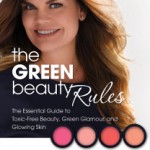
Click to buy The Green Beauty Rules
Comments:
Filed Under: Books
Posted by Elena del Valle on March 7, 2016
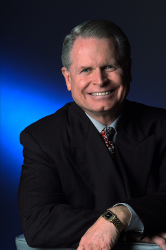
Ray Zinn, author, Tough Things First
Photo: McGraw Hill
A podcast interview with Ray Zinn, author, Tough Things First (see Former Silicon Valley CEO shares his secrets to success), is available in the Podcast Section of Hispanic Marketing & Public Relations, HispanicMPR.com. During the podcast, he discusses how doing tough things first may be essential to getting ahead with Elena del Valle, host of the HispanicMPR.com podcast.
During the podcast, he discusses how doing tough things first may be essential to getting ahead with Elena del Valle, host of the HispanicMPR.com podcast.
Ray is an inventor, entrepreneur, and the longest serving CEO of a publicly traded company in Silicon Valley. He is best known for creating and selling the first Wafer Stepper (an industry standard piece of semiconductor manufacturing equipment), and for co-founding semiconductor company, Micrel (acquired by Microchip in 2015), which provides essential components for smartphones, consumer electronics and enterprise networks.
He served as chief executive officer, chairman of its Board of Directors and president since Micrel’s inception in 1978 until his retirement in August 2015. Some credit his philosophy on people, servant leadership, humanistic management and the ethics of corporate culture with Micrel’s nearly unbroken profitability. Ray holds more than 20 patents for semiconductor design. A proud great-grandfather, he is actively-retired and mentoring entrepreneurs.
To listen to the interview, scroll down until you see “Podcast” on the right hand side, then select “HMPR Ray Zinn” and click on the play button below or download the MP3 file to your iPod or MP3 player to listen on the go, in your car or at home. To download it, click on the arrow of the recording you wish to copy and save it to disk. The podcast will remain listed in the March 2015 section of the podcast archive.
Posted by Elena del Valle on March 4, 2016
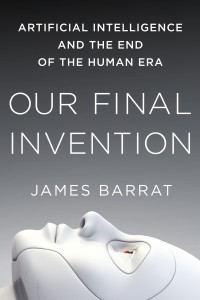
Our Final Invention
Photos: book cover courtesy of St. Martin’s Press, and author photo courtesy of Ruth Lynn Miller
Filmmaker James Barrat was stunned when he stumbled on an issue he found so complex and important that he felt it necessary to write about it rather than produce a documentary. Four years later his book, Our Final Invention: Artificial Intelligence and the End of the Human Era (St. Martin’s Press, $16.99), was published. He is now keen to spread the word about the Artificial Intelligence (AI) issue further through a film, provided he finds funding.
“The AI Risk issue struck me as hugely important and all but unknown,” the author said by email. “There were no books or films about it, and the only people discussing it were technologists and philosophers. They were working hard on solving the problem, but not on publicizing it. As a documentary filmmaker, I bring complex scientific and historical subjects to large audiences. That’s my expertise. So I felt uniquely positioned, even duty-bound, to spread the word. I wrote a book rather than make a film because even simplified AI Risk is a complex subject. An average hour-long documentary film contains just 5,000 words. I knew I could do a better job at bringing this subject to a wide audience with a book of 80,000 words.”
The softcover book, his first, is divided into an Introduction and 16 chapters. He wrote it for the general public convinced everyone should become award of AI issues. In the book, he says he believes AGI, an advanced super intelligence, could arise from Wall Street. That while an intelligence explosion might be missed by the average person, the secretive environment on Wall Street lends itself to the development of such technology. He also believes the developers of artificial intelligence may posses the same lack of moral fiber as the oft maligned financial executives who have repeatedly misbehaved without intense regulation.
“Artificial Intelligence is the science and study of creating machines that perform functions normally performed by human intelligence,” he said when asked to define the concepts for non scientists. “These include the whole range of human cognitive abilities: logical reasoning, navigation, object recognition, language processing, theorem proving, learning, and much more. AGI is Artificial General Intelligence, or machine intelligence at roughly human level, in all its domains. ASI is Artificial Super Intelligence, or machine intelligence at greater than human level. We’re probably no more than two decades away from creating AGI. Shortly after that we’ll share the planet with ASIs that are thousands or millions of times more intelligent than we are. My book asks ‘Can we survive?’”
Where is the dividing line between an operating system and artificial intelligence? He describes an operating system as “simply the interface between you, a human, and the parts of the computer that process information. For example, Apple’s OS is functional computer window dressing that allows you to perform useful jobs with the computer’s processors, memory and other hardware. The OS isn’t intelligent.” Instead, Artificial Intelligence is a computer program or linked programs that perform acts of human-like intelligence in very narrow domains, such as search and navigation.
When asked if it is necessary for an entity to be self aware in order for it to be artificial intelligence, he said, “Artificial Intelligence is all around us – in our phones, our cars, our homes. It’s not self aware in any important sense. However, self-awareness may be necessary for AGI. In our own intelligence, self-awareness plays a large part. Our awareness of our bodies and minds and our environment impacts how we perform tasks, achieve goals, and learn. It remains to be seen if computers can emulate our intelligent behavior without self awareness. It may be possible. Probably it’ll be necessary for the computer to have some kind of self-awareness, for example, a mathematical model of itself and its environment.
But will it have anything like real consciousness? Will it know it exists? Good questions. I believe we’ll create wildly intelligent aliens. That is, they’ll be super effective at intelligent tasks, but they’ll perform them differently than we do, and they won’t possess an inner life anything like ours. For example, an airplane doesn’t fly like a bird or have other qualities of a bird, but it accomplishes the same essential feat much faster and for much longer, under harsher conditions. In the same way, a superintelligent machine will outperform us in every cognitive dimension. But it won’t have our mammalian evolutionary inheritance of empathy, or love. It won’t have an inner life at all unless we program one in. And we don’t have any idea how to do that.”
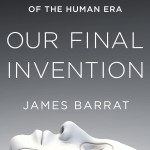
Click to buy Our Final Invention
Comments:
Filed Under: Books
Posted by Elena del Valle on February 24, 2016
President, The Pathfinder Group

Jay Gronlund, president, The Pathfinder Group
The surge behind this exploding Bernie phenomenon is fascinating for many reasons. It is certainly an indication of how divergent our society and politics have become, and this could even intensify in the future. It also shows the political potential of finding and concentrating on the most pronounced issues that frustrate younger people from all ethnic backgrounds, especially Hispanics. Interestingly, from a branding perspective, there are some revealing lessons from this unexpected success of the Bernie Sanders brand.
Click here to read the entire article How Hispanic Millennials Are Driving the Bernie Sanders Brand
Posted by Elena del Valle on February 18, 2016
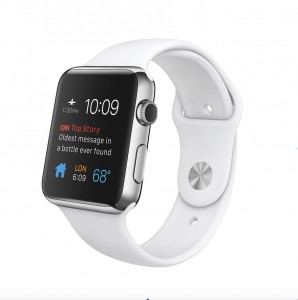
Apple Watch
Photo: Apple
Less than a month after I bought a new Swiss made watch it stopped working. I contacted the manufacturer per the warranty instructions to discover the company had been purchased by another watch seller. Dozens of calls, emails and faxes and a month later I’m still waiting for my repaired watch to arrive. As I think of replacement options and future purchases a smartwatch has crossed my mind. If a traditional watch under warranty was such a hassle what would a smartwatch offer?
Thinking of acquiring your own bit of wrist software bling? If you plan to buy a smartwatch you will be among 6 percent of Americans who own one, according to Watches and Jewelry US, September 2015, a report by Mintel. Researchers at the company believe by 2020 sales of traditional and sport watches could suffer since 21 percent of survey respondents who bought a watch in the previous year said they were very interested in the smartwatch trend. Among men between 18 and 34 years old 37 percent said they were interested.
“There is a very real possibility that smartwatch sales could cannibalize sales of other watches over the next five years,” said Diana Smith, senior research Analyst, Retail & Apparel at Mintel. “This scenario assumes that the current smartwatch buzz manifests into sales that can withstand momentum as more functional apps are created, more developers launch new products and prices come down. It also assumes that sport watches continue to grow in light of consumers’ heightened interest in using them to track their fitness levels and compete against others in various forms of exercise. An ideal situation for the smartwatch sector would be one where smartwatches (and sport watches) lift the entire category, while traditional watches – which comprise the majority of total watch sales – remain at least steady.”
U.S. retail sales of watches and jewelry may have been $79.3 billion in 2015, up 1.6 percent over the previous year. Slow growth may continue through 2020 to reach a combined total of $88.6 billion, and Mintel researchers believe watch sales will reach $9.5 billion in 2015, gaining 2 percent over 2014. Based on an estimated growth rate of 4 percent year-over-year (YOY), the market could reach $11.5 billion by 2020.
It is worth noting that traditional watches were favorites among respondents to the Mintel survey, where 31 percent of men and 30 percent of women preferred them. Among the survey takers 25 percent, including 32 percent of older Millennials (consumers aged 29-38), said they buy watches mainly as a fashion statement
Posted by Elena del Valle on February 10, 2016
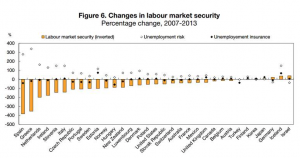
Changes in labour market security 2007-2013- click to enlarge
Chart: Organisation for Economic Co-operation and Development (OECD)
How is your job satisfaction? If your answer is average, it is not surprising. If the quality of your employment declined in the past 10 years you are not alone. What makes a good job and how do individual countries measure in that category? Seeking to answer these questions the Organisation for Economic Co-operation and Development (OECD) examined job quality from the following perspectives: Earnings quality, job market security and work environment quality.
For earnings the organization’s researchers looked at earnings and their distribution across the workforce. For job market security they examined the risk of unemployment and its expected duration. When considering the quality of the working environment they looked at the incidence of demands and resources and the combined potetntial of high demands and low resources that result in job strain.
The best performing countries are Australia, Austria, Denmark, Finland, Germany, Luxembourg, Norway, and Switzerland. They are followed by Belgium, Canada, Czech Republic, France, Ireland, Israel, Japan, Korea, Mexico, Netherlands, New Zealand, Slovenia, Sweden, United Kingdom, and United States display with average performance. That means than when examining the three job quality measures, they countries display no more than one outcome in the top-10 or the bottom-10 of the ranking. At the bottom of the list are Estonia, Greece, Hungary, Italy, Poland, Portugal, Slovak Republic, Spain and Turkey.
The OECD data also reveal significant differences across groups of workers. Young and unskilled workers generally have the worst performance in terms of employment and have lower earnings and considerably higher labour market insecurity and higher job strain than other segments. Women’s employment rates are much higher than men’s while at they are paid far less than their male counterparts. On the up side, they are less likely than men to suffer from job strain.
Job quality dropped in the past decade. The crisis affected the number of jobs and their quality. Earnings quality decreased in two thirds of the OECD countries, especially in Greece and the United Kingdom; job market security worsened in most OECD countries, especially in Spain and Greece.
The mission of the OECD is to promote policies that will improve the economic and social well-being of people around the world. The organization, based in Paris, France, was established in 1961. It has 34 member countries, 2,500 staff and a budget of 363 million euros.
Posted by Elena del Valle on February 5, 2016
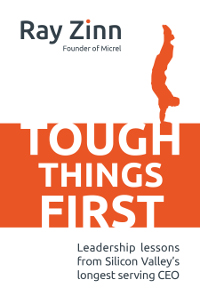
Tough Things First
Photos: McGraw Hill
When as a young man Ray Zinn decided to drop out of college he learned a lesson in discipline from his parents that influenced his life and eventually his career. In time he became convinced that we must do the things we don’t want to do because they are either not fun or look too imposing ahead of easy ones. This belief served him well when in 1978 he co-founded Micrel, a company that sells electronics for smartphones, consumer electronics and enterprise networks. He led the profitable company for 37 years until his retirement last year.
In Tough Things First Leadership Lessons from Silicon Valley’s Longest-Serving CEO (McGraw Hill, $25), a 250-page hardcover book published this year, he shares his approach to business and leadership for an audience of entrepreneurs and business leaders. He is convinced that good leaders learn to love and embrace the distasteful tasks in their lives once they understand how important they are to their careers and success.
“I wanted to synthesize my 37 years of running a high tech company, with the purpose of inspiring and helping the up-and-coming entrepreneur in running their businesses correctly,” he said by email via his publishing company when asked about the main reason he wrote the book.

Ray Zinn, author, Tough Things First
The book is divided into nine chapters and an epilogue in two parts: Business as a body: disciplining an organization from head to foot and Entrepreneurialism: building companies that last through the ages. Each chapter ends with a bullet point list of lessons. He wraps up highlighting seven aspects he believes are necessary to start a company. They are: outlining financial milestone goals, preparing an exit, establishing principles, coming up with a plan for the unexpected emergency that will come up sooner or later, striving for calm and good mental health, preparing for the long term, and being humble.
“The biggest surprise is the effort and cost to market the book,” he said. “Publishers today rely on the author far too much for marketing, and reaching broad audiences takes effort.”
Zinn founded Mentor Capital, an entrepreneur accelerator, to support the efforts of innovators wishing to establish new companies and to change the leadership foundations in Silicon Valley and beyond. He said the greatest challenge to the three year long book project for him was being legally blind. Tough Things First was his first book.
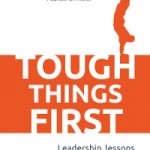
Click to buy Tough Things First
Comments:
Filed Under: Books
Posted by Elena del Valle on January 29, 2016
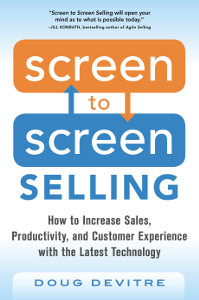
Screen-to-Screen Selling
Photo: McGraw Hill Education
As a growing generation of Millenials, accustomed to and sometimes demanding technology, penetrates the workforce and the circle of new buyers, businesses must adapt or risk loosing the race to capture their attention. Increasingly that generation relies on electronic devices in ways the Baby Boomers do not. For example, Americans in their 20s and 30s are more likely to make purchases with smartphones than by paying with cash or checks (see Bank time is now screen time, The New York Times, January 24, 2016).
Doug Devitre, author, Screen-to-Screen Selling How to Increase Sales, Productivity, and Customer Experience with the Latest Technology (McGraw Hill, $30) is convinced online and digital sales are essential. In the 304-page hardcover book, published in 2015, he strives to guide readers to grow sales, improve performance, and keep customers happy with apps, software and tools.
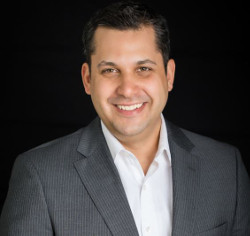
Doug Devitre, author, Screen-to-Screen Selling
The book is divided into 20 chapters spread across three sections: Preparation, Conversation and Follow Up. According to the book, it is possible to customize the sales process when selling screen to screen to meet customer desires, based on their capabilities and their software or equipment, and that in turn humanizes the experience.
Also, trying new technologies will set leaders apart, the author says. He believes success in that space comes with inherent risks. Screen to Screen skills, he believes, has led him to improve other skills such as old fashioned pen and paper note taking as well as maintaining relationships easily, having a flexible work schedule and taking much needed time off.
Devitre, founder of Doug Devitre International, Inc., developed the concept of Screen-to-Screen Selling, a process for sales professionals to use technology during transactions to drive sales and increase profitability. Before founding the new company he was a realtor, trainer and speaker.
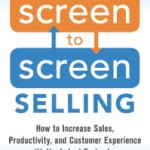
Click to buy Screen to Screen Selling
Comments:
Filed Under: Books























